 |
 |
 |
| |
Similar E/C/F/TAF Safety and Efficacy in Old vs Younger With Renal Impairment - Geriatric patients
|
| |
| |
7th International Workshop on HIV and Aging, September 26-27, 2016, Washington, DC
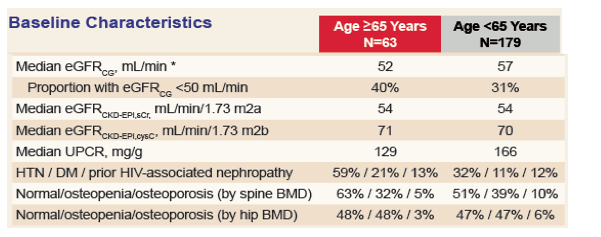
Mark Mascolini
Among HIV patients with renal impairment, those 65 or older had virologic and kidney outcomes similar to younger people after switching to E/C/F/TAF (Genvoya) for 96 weeks in a phase 3 trial [1]. People 65 or older did not differ from younger participants in bone mineral density (BMD) gains after switching to E/C/F/TAF.
Tenofovir alafenamide (TAF) coformulated as a once-daily pill with emtricitabine and cobicistat-boosted elvitegravir, an integrase inhibitor, is licensed for initial or maintenance therapy in people age 12 or older. In two phase 3 trials, E/C/F/TAF proved virologically noninferior to tenofovir disoproxil fumarate (TDF) coformulated with E/C/F as first-line therapy [2]. Renal and bone markers in that trial favored E/C/F/TAF through 48 weeks, though the TAF group lost an average 1.3% of BMD at the spine and 0.66% at the hip.
Protocol 0112 was a phase 3 single-arm open-label trial in people with stable renal impairment (estimated glomerular filtration rate [eGFR] 30 to 69 mL/min for at least 3 months) who switched from a suppressive TDF or non-TDF antiretroviral regimen (viral load below 50 copies for at least 6 months) to E/C/F/TAF [3]. After 48 weeks there was no significant change in estimated creatinine clearance, though 2 participants (0.8%), both with uncontrolled hypertension, stopped study drugs because of decreased creatinine clearance. Proteinuria, albuminuria, and tubular proteinuria improved significantly in the study group.
The researchers conducted a post hoc comparison of virologic and safety outcomes in 63 participants 65 years old or older and 179 younger people [1]. Median ages were 68 (range 65 to 82) and 55 (range 24 to 64). Respective proportions of women were 16% and 22% and blacks 17% and 18%. Median eGFR was lower in the older group (52 versus 57 mL/min), and respective proportions with eGFR below 50 mL/min were 40% and 31%. The older and younger groups were similar in rates of prior HIV-associated nephropathy (13% and 12%) and in hip and spine BMD.
After 96 weeks of E/C/F/TAF, 86% of the older group and 89% of the younger group had maintained a viral load below 50 copies, a nonsignificant difference. The researchers recorded 1 virologic failure (2%) in the older group and 4 (2%) in the younger group. Among people 65 or older, 4% with a baseline eGFR below 50 mL/min and 7% with a higher baseline eGFR had grade 3 or 4 adverse events on E/C/F/TAF. Respective rates in the younger group were 6% and 19%. One older person stopped treatment because of a renal adverse event (2%), compared with 4 younger people (2%).
eGFR remained stable over 96 weeks in both the older and younger groups. Markers of proteinuria (UPCR, UACR, tubular proteins) fell significantly regardless of age.
Through 96 weeks after the switch to E/C/F/TAF, spine BMD improved significantly in the older group (1.64%, P = 0.001) and the younger group (2.03%, P < 0.001). The between-group difference was not statistically significant. The same proved true for hip BMD, with a 1.57% gain in older participants (P = 0.004) and a 1.95% gain in younger participants (P < 0.001), and with no significant difference between groups. After 96 weeks the proportion of older people with T-score-defined osteopenia fell from 30% to 25% at the spine and from 46% to 41% at the hip. Low baseline osteoporosis rates (6% at the spine, 4% at the hip) did not change through 96 weeks.
The researchers believe their findings support use of E/C/F/TAF in geriatric patients with HIV and renal impairment, as well as in younger renally impaired people with HIV.
References
1. Martorell C, Ward D, Short W, et al. Efficacy and safety of co-formulated elvitegravir, cobicistat, emtricitabine, and tenofovir alafenamide in geriatric adults with renal impairment. 7th International Workshop on HIV and Aging, September 26-27, 2016, Washington, DC. Abstract 36.
2. Sax PE, Wohl D, Yin MT, et al. Tenofovir alafenamide versus tenofovir disoproxil fumarate, coformulated with elvitegravir, cobicistat, and emtricitabine, for initial treatment of HIV-1 infection: two randomised, double-blind, phase 3, non-inferiority trials. Lancet. 2015;385:2606-2615.
3. Pozniak A, Arribas JR, Gathe J, et al. Switching to tenofovir alafenamide, coformulated with elvitegravir, cobicistat, and emtricitabine, in HIV-infected patients with renal impairment: 48-week results from a single-arm, multicenter, open-label phase 3 study. J Acquir Immune Defic Syndr. 2016;71:530-537.
https://www.ncbi.nlm.nih.gov/pmc/articles/PMC4804743/.......
http://www.natap.org/2016/CROI/croi_68.htm .... with GFR >50
http://www.natap.org/2016/CROI/croi_90.htm
------------
ASM/ICAAC: Tenofovir Alafenamide in Participants with
Diabetes and Renal Impairment:
Renal Safety Through 96 Weeks......
http://www.natap.org/2016/HIV/062116_03.htm
----------------------------
Efficacy and Safety of Co-formulated Elvitegravir, Cobicistat, Emtricitabine, and Tenofovir Alafenamide in Geriatric Adults with Renal Impairment
Reported by Jules Levin
C Martorell1, D Ward2, W Short3, I Brar4, M Ramgopal5, D Cunningham6, J DeMorin7,
D Piontkowsky7, P Wong7, M Das7, T Nguyen-Cleary7, S McCallister7
1The Research Institute, Springfield, MA; 2Dupont Circle Physicians Group, Washington DC; 3Perelman School of Medicine at the University of Pennsylvania, Philadelphia, PA


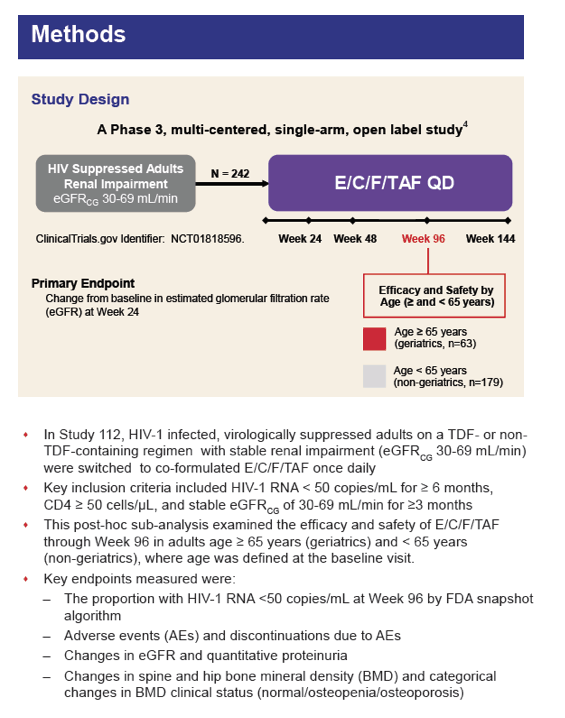
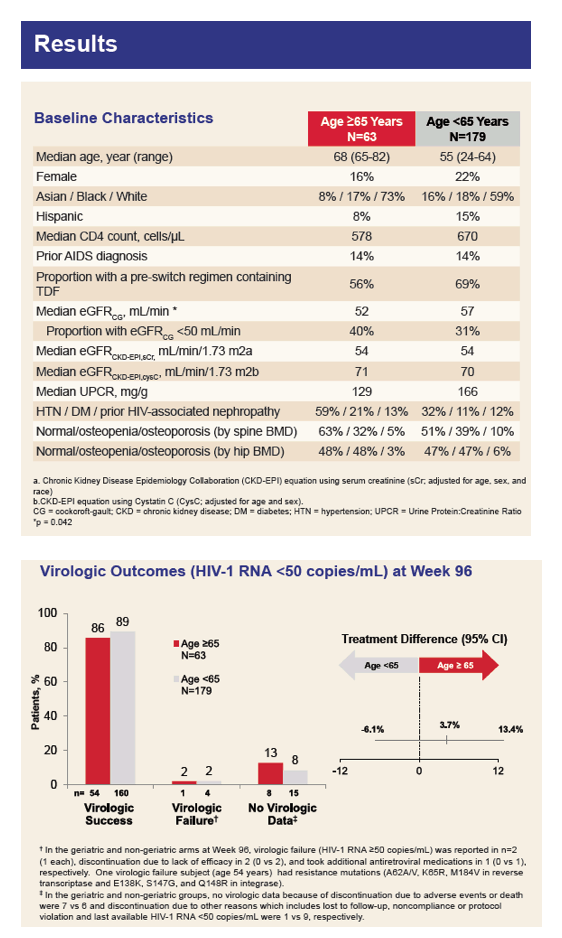
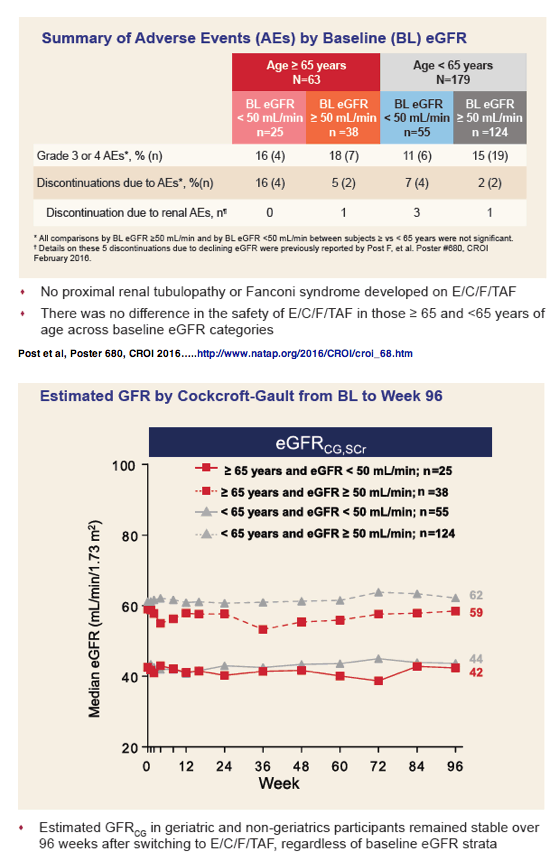
Post et al, Poster 680, CROI 2016.....http://www.natap.org/2016/CROI/croi_68.htm
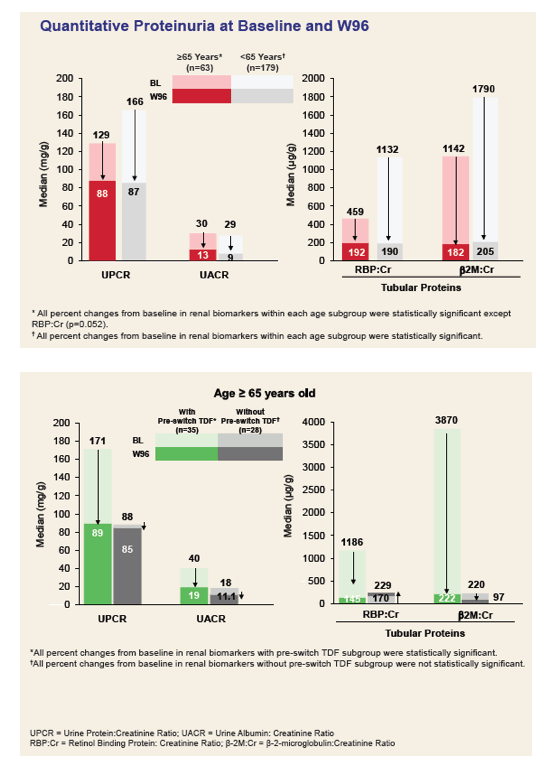

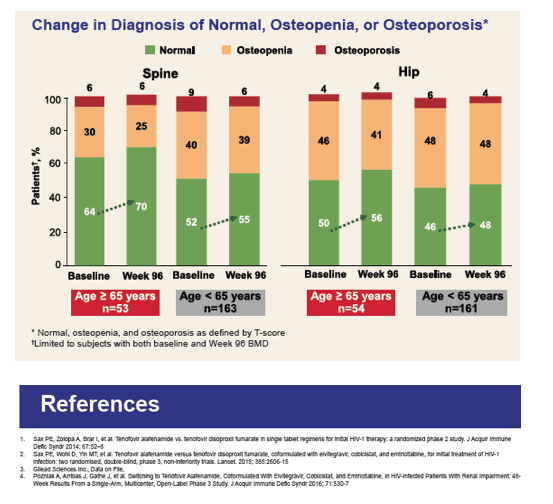
|
| |
|
 |
 |
|
|